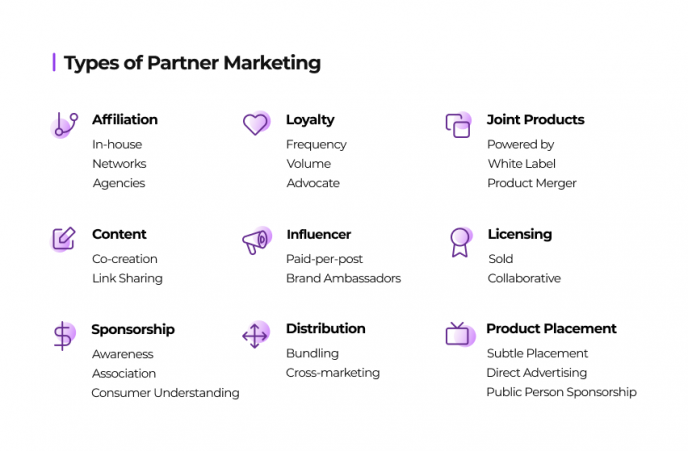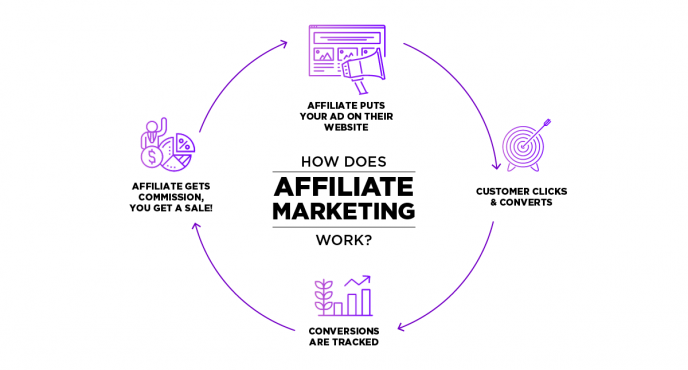Marketing, per se, is very simple when you think about it. You have a product desirable by a specific group of people, and you need to choose the right time and place where this group of people can easily find and buy your product at a fair price.
There is some truth in such simple wording. However, the success of the classic marketing mix—product, place, price, and promotion—depends on a lot of nuances. Marketing involves a lot of hard work, and if you miss out on even one piece from the marketing mix, the result can be disastrous.
In this article, we’ll talk about how the marketing mix is expanding today. We’ll pay special attention to partner marketing: how it works and what tools make its integration into the marketing mix easier. First, let’s figure out what the marketing mix represents.
Expansion of the Marketing Mix
The marketing mix in the modern sense isn’t only the 4Ps, but rather a set of tools that a business uses to sell products or services to target customers. Using the selected elements of the marketing mix, you create a strategy that maximizes the strengths and minimizes the weaknesses of your business. This approach aims, among other things, to improve your competitiveness and to create profitable partnerships.
The term marketing mix dates back to the 1960s and since then has been primarily associated with basic 4Ps. Let’s take a closer look at the elements of this model to understand why it requires expansion.
- Product. What’s for sale. The development of products or services should take into consideration the life cycle and obstacles that may arise when it gets to the customers.
- Price. The cost to purchase a product. A lower price will make the product more accessible, while a higher price will add exclusivity. Pricing has one of the most significant impacts on your marketing strategy.
- Place. The ways how the customer can access or buy a product. Distribution options to experience products can include online, in-store, mobile, etc.
- Promotion. This includes advertising, direct marketing, public relations (PR), and sales promotion. It’s important for promotion to emphasize what is communicated, to whom it’s communicated, how the target audience is reached and with what frequency. The digitalization of our modern life adds different promotional channels to the traditional ones. Alongside TV, radio, paid search (Google), social media ads (Facebook, Instagram), display ads & banners, the growing popularity gains native advertising across search, social or open web.
Later, it became customary to add three more to these 4Ps, and the marketing mix eventually expanded to 7Ps.
- Physical Evidence. Demonstrative evidence related to the product or service that reassures a customer. These can be a beautiful website, packaging, well-trained staff, etc.
- Process. The standards of an internal organization that has a direct influence on the provision of services or products. This includes monitoring employees’ performance concerning development, delivering goods, and communicating with customers.
- People. What impression employees have on customers. This element includes the approach to employees recruiting and training. This is especially true for those who directly interact with customers, sales or customer service.
Technologies continue to progress, so the need to expand the marketing mix models still remains. Better suited for digital marketing, the 7Ps model was updated and applied to online channels to give a practical approach that works well for multichannel businesses. Although some would argue it’s part of “Place,” an eighth P, “Partners” is often recommended for businesses to gain reach online.
What is Partner Marketing?
Partner marketing (or Partnership marketing) is a collaboration with a person or business which has influence in the sector that you’re interested in selling to. By creating new partnerships, you’re able to introduce your brand to a new or wider audience.

How Does Partner Marketing Work?
There are many partner marketing methods out there, but the most common practice is affiliation. Affiliate marketing is a technique where affiliates or publishers promote your product or service on their website in return for a commission. The popularity of this type of partnership is attributed to the fact that it fits perfectly into the performance marketing matrix. This is the exact form of marketing that is measurable and the return on investment (ROI) can be accurately calculated.
The performance of the affiliate program largely depends on the chosen payment model. Affiliates don’t always receive payment solely per sale; a hybrid payment system can be used that includes pays per impressions, clicks, leads, and commission tiers. Payment methods may vary widely, but the nuances of the particular business area are key when choosing the right model.
The affiliates themselves are also very different, from media outlets to bloggers who review various products in social media. However, they are all united by a single concept: contain content that attracts traffic with your potential customers in it. The terms of such a partnership are fairly transparent. The affiliate receives payment for the user’s actual action, specified upfront in the affiliate program’s rules.

Partner marketing works best when businesses create all conditions for long-term partnerships. To achieve this, an advertiser needs to provide convenient and fast payments, reliable data security and also come up with a bonus system for their best-performing affiliates. The partner marketing platform helps to carry out and automates many of these processes, tasks, and even more.
Partner Marketing Solution for Smooth Integration in Marketing Mix
The increasing bias towards digital and performance directions make the marketing mix more multilayered. Therefore, it’s vital for businesses to delegate some of the functions to software solutions, so you could focus on your gains.
The partner marketing platform‘s central task is definitely tracking all the event-level data that leads to the desired action. Сoupled with a robust analytics capability, it allows improving the effectiveness of the payment methods, traffic sources, and many other aspects of your partner marketing. Still, that’s not enough, so let’s see what else the partner marketing solution offers:
- Billing and Accounting. It will help you generate invoices and make payouts to your affiliates while staying compliant with any tax legislation worldwide.
- Fraud Prevention. Advertisers all over the world lose millions of dollars to fraud and fraudulent activities. Thus your partner marketing platform should provide tools to efficiently detect and block such kinds of actions. Click-level fraud prevention, traffic quality regulation, multiple other features and integrations are the must for any marketing plan.
- Expanding Partner Network. The right marketing platform will help you find and recruit publishers, influencers, affiliates, and establish lucrative partnerships.
- Customization. It’s absolutely imperative that the platform has an open API to implement any integrations you need to keep the workflow. Besides, configurable system settings also help you to match your existing business processes. The corporate design, logo, color scheme, icons, and any needed layout within the platform will make your company’s identity recognized throughout.
Conclusion
Considering technology development and the growth of competition in today’s marketing, you need to keep up with the evolving industry. That’s why partnerships and resource sharing between businesses with common goals are becoming in great demand. The performance-based nature of this channel and the clear visibility of ROI make partner marketing a significant element of the neat marketing mix.